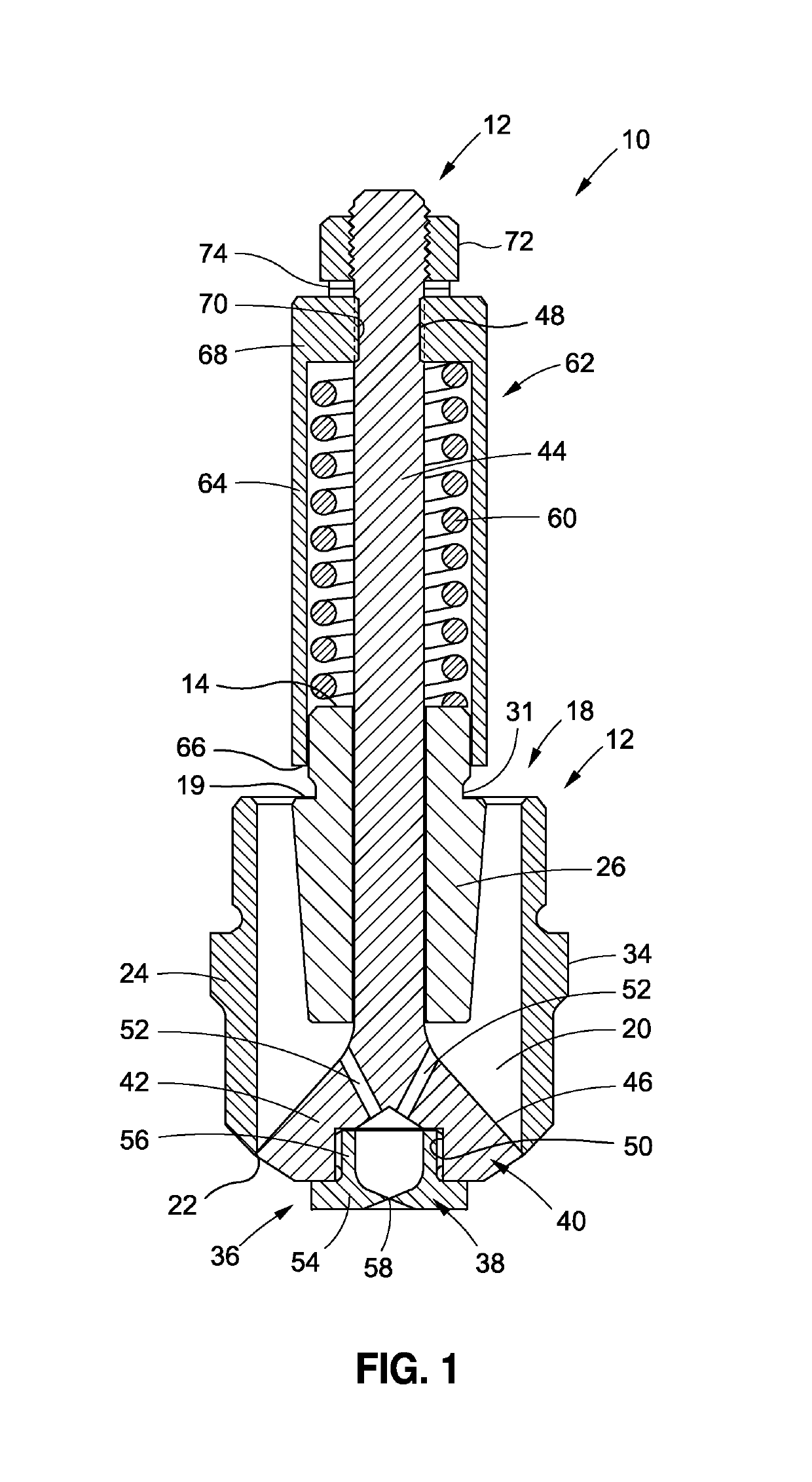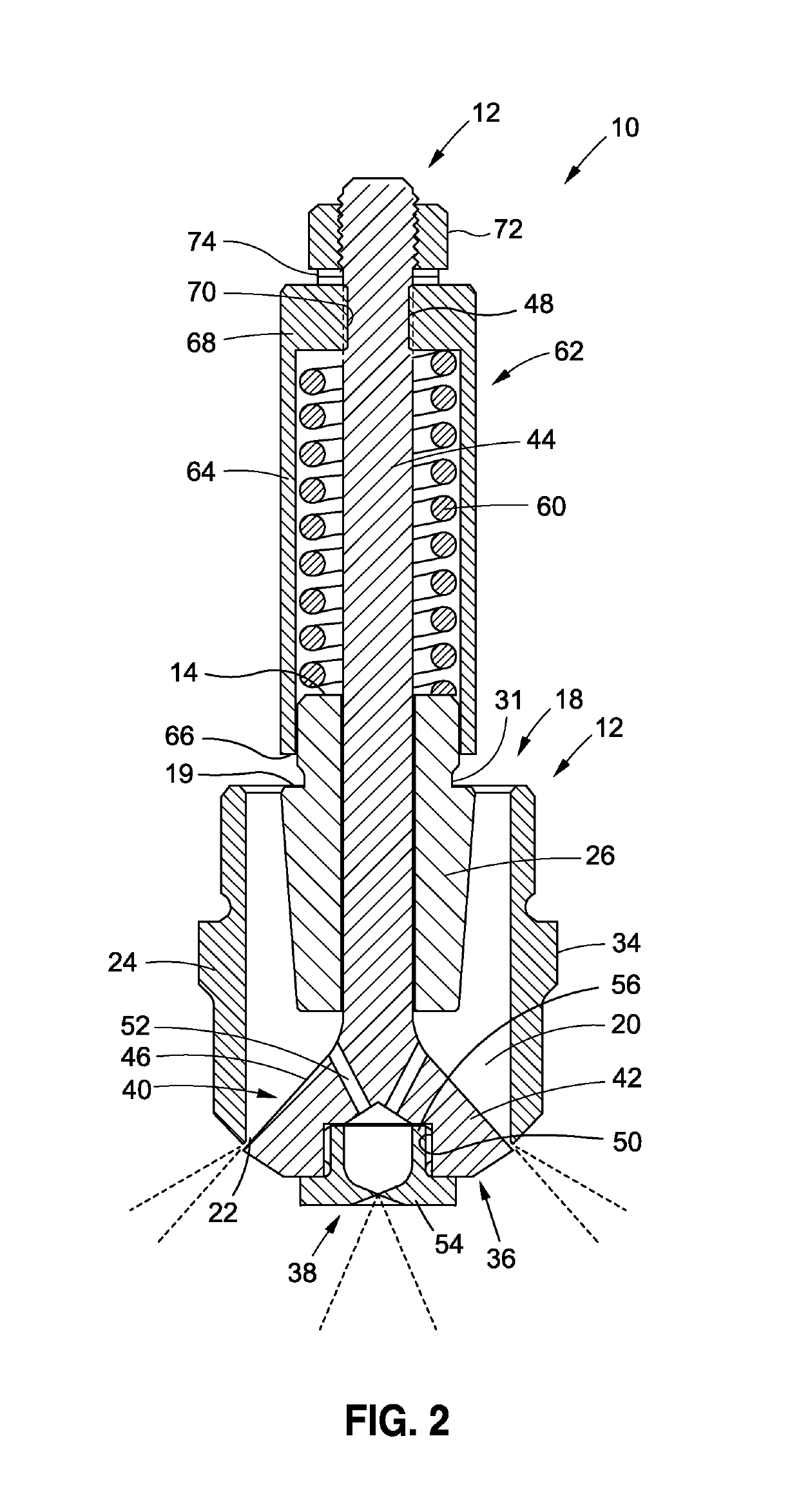Dual cone spray nozzle assembly for high temperature attemperators
a technology of attemperator and nozzle, which is applied in the direction of superheating control, superheating superheaters, lighting and heating apparatus, etc., can solve the problem of insufficient fluid pressure level in the fluid chamber
- Summary
- Abstract
- Description
- Claims
- Application Information
AI Technical Summary
Benefits of technology
Problems solved by technology
Method used
Image
Examples
first embodiment
[0030]Referring now to the drawings wherein the showings are for purposes of illustrating preferred embodiments of the present invention only, and not for purposes of limiting the same, FIGS. 1-3 depict a spray nozzle assembly 10 which is outfitted with a spray nozzle sub-assembly 36 constructed in accordance with present invention. In FIG. 1, the spray nozzle sub-assembly 36 is shown in a closed or off position. In FIG. 2, the spray nozzle sub-assembly 36 is shown in an open or on position. The nozzle assembly 10 is adapted for integration into a desuperheating device such as, but not necessarily limited to, a probe type attemperator.
[0031]The nozzle assembly 10 comprises a nozzle housing 12 which is shown with particularity in FIG. 3. The nozzle housing 12 has a generally cylindrical configuration and, when viewed from the perspective shown in FIG. 3, defines a first, top end 14 and an opposed second, bottom end 16. The nozzle housing 12 further defines a generally annular flow pa...
second embodiment
[0051]Referring now to FIGS. 4-8, there is shown a spray nozzle assembly 100 which is outfitted with a spray nozzle sub-assembly 136 constructed in accordance with present invention. In FIG. 4, the spray nozzle sub-assembly 136 is shown in a closed or off position. In FIG. 3, the spray nozzle sub-assembly 136 is shown in a partially open or on position. In FIG. 4, the spray nozzle sub-assembly 36 is shown in a fully open or on position. The nozzle assembly 100 is also adapted for integration into a desuperheating device such as, but not necessarily limited to, a probe type attemperator.
[0052]The nozzle assembly 100 comprises a nozzle housing 112. The nozzle housing 2 has a generally cylindrical configuration and, when viewed from the perspective shown in FIGS. 4-6, defines a first, top end 114 and an opposed second, bottom end 116. The nozzle housing 112 further defines a generally annular flow passage 118. The flow passage 118 preferably comprises two or more arcuate flow passage s...
PUM
 Login to View More
Login to View More Abstract
Description
Claims
Application Information
 Login to View More
Login to View More - R&D
- Intellectual Property
- Life Sciences
- Materials
- Tech Scout
- Unparalleled Data Quality
- Higher Quality Content
- 60% Fewer Hallucinations
Browse by: Latest US Patents, China's latest patents, Technical Efficacy Thesaurus, Application Domain, Technology Topic, Popular Technical Reports.
© 2025 PatSnap. All rights reserved.Legal|Privacy policy|Modern Slavery Act Transparency Statement|Sitemap|About US| Contact US: help@patsnap.com



